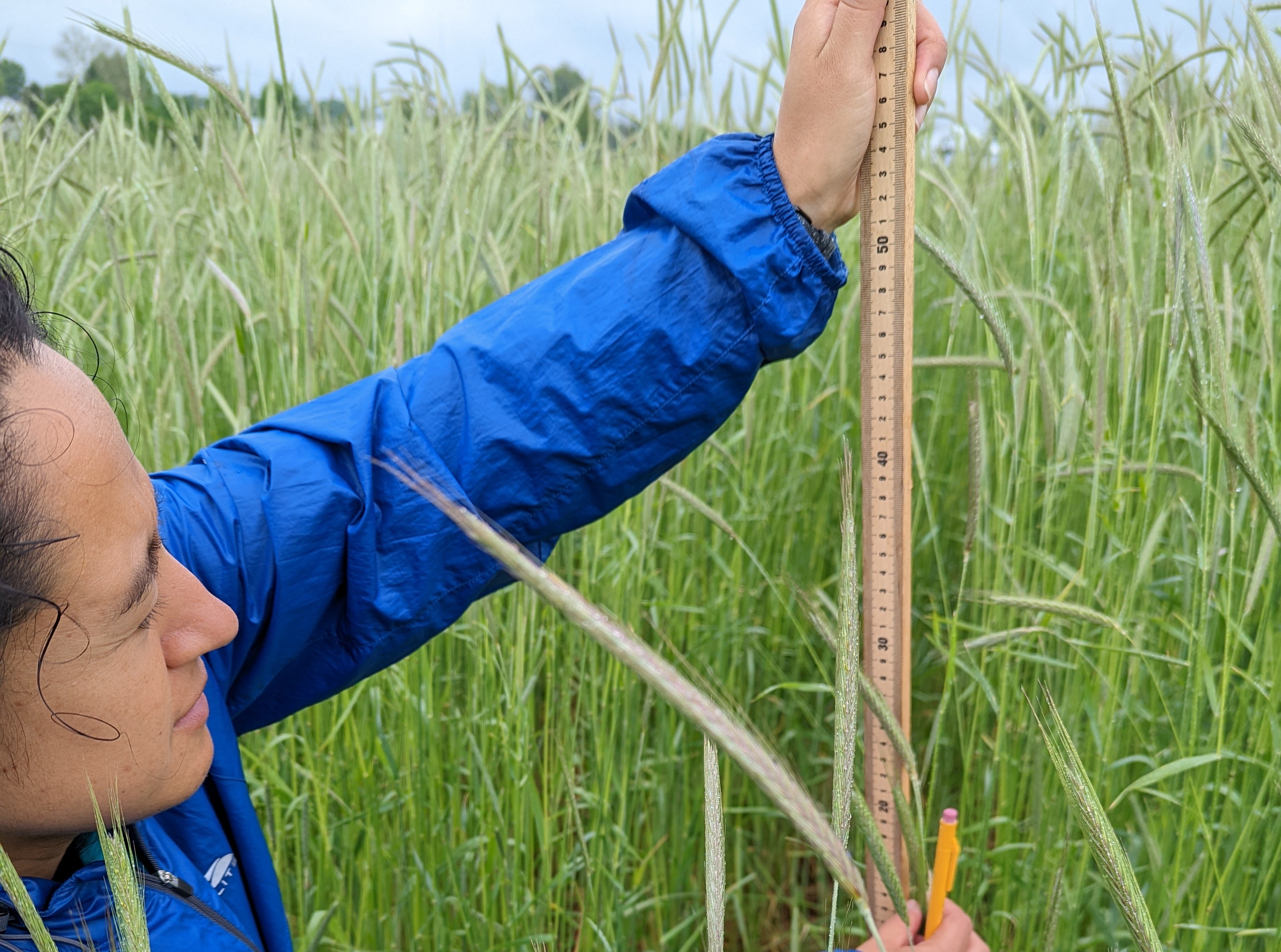University of Kentucky study highlights the benefits of mixing cover crops
University of Kentucky study highlights the benefits of mixing cover crops


A new University of Kentucky study entitled “Productivity benefits of cereal-legume cover crop mixtures under variable soil nitrogen and termination times” suggests that mixing cover crops is a beneficial strategy for modern agriculture.
Published in the European Journal of Agronomy, the research reveals that mixing cereal rye and crimson clover as cover crops can significantly improve productivity, with associated benefits for soil health.
This research, led by Patricia Moreno-Cadena and her UK Department of Plant and Soil Sciences team at the UK Martin-Gatton College of Agriculture, Food and Environment and conducted at the UK North Farm, demonstrated that these mixed cover crops can offer more advantages than planting them separately making them a valuable tool for farmers.
Cover crops, such as cereal rye and crimson clover, play a critical role in sustainable agriculture by preventing soil erosion, enhancing soil organic matter and improving nutrient cycling. Cereal rye is known for its rapid growth and ability to cover the ground quickly, which helps protect the soil and retain nutrients. However, it can also immobilize nitrogen, making the nitrogen less available for subsequent crops like corn. Conversely, crimson clover, a legume, adds nitrogen to the soil but does not provide as much ground cover, especially in the fall.
"Our findings suggest that using a mix of cereal rye and crimson clover can provide significant benefits, particularly in fields with low nitrogen levels,” said first author and former post-doctoral student Moreno-Cadena. “By understanding the conditions under which these mixtures thrive, farmers can make informed decisions to improve their crop management practices."
The study, conducted over two years, involved planting rye alone, clover alone and a mixture of both on long-term corn fields with varying nitrogen levels. The researchers measured the growth, nitrogen content and ground cover of these crops from fall 2020 through spring 2022. They found that mixed cover crops adapted better to different soil nitrogen levels and management practices than single-species crops.
"I've been interested in cover crop mixtures for years because they merge benefits and moderate negative attributes of individual cover crop species," explained Hanna Poffenbarger, associate professor in the Department of Plant and Soil Sciences, also a researcher on the project.
A significant discovery was that the blend of rye and clover generated greater plant material (biomass) and took up more nitrogen than each crop grown independently, particularly under moderate soil nitrogen levels.
"Under moderate nitrogen levels, the mixed cover crops produced more biomass than both monocultures,” Poffenbarger noted. “At low and high nitrogen levels, the mixed crops performed similarly to clover alone and rye alone, respectively."
The study also highlighted the importance of the timing of cover crop termination -- the point at which cover crops are killed to prepare for the main crop. Early termination favored rye, while late termination favored clover.
If a farmer prefers to plant their main crop earlier and wants to avoid too much residue, the mixture might not be as beneficial. But if the cover crop is allowed to grow longer into the spring, the mixture can provide more benefits.
Furthermore, the adaptability of mixed cover crops makes them particularly valuable. In fields with varying soil nitrogen levels, mixed crops can adjust their growth patterns to make the best use of available nutrients. For example, in areas with low nitrogen, clover thrives and adds nitrogen to the soil, which benefits the next crop. In contrast, in areas with high nitrogen, rye grows more vigorously, helping to take up potentially leachable nitrogen and reduce erosion.
More biomass means more organic matter is added back to the soil, improving soil structure and fertility over time. This study shows that cover crop mixtures can be more productive and beneficial for the soil than single-species cover crops.
The study suggests that mixed cover crops are more adaptable and can provide consistent benefits across different field conditions. They are particularly beneficial in fields with low nitrogen levels, where clover can thrive and add valuable nitrogen to the soil. However, if a field has high nitrogen levels, rye will dominate, and the added cost of clover seed may not be justified.
Poffenbarger highlighted another important aspect from the study.
"If farmers know their soil has a lot of nitrogen leftover from the previous crop, including clover, then mixing might not be worth the extra cost. But in fields with low nitrogen, the mixture can offer significant advantages."
Poffenbarger also addressed the broader implications of this research for soil health and sustainability.
“This research provides valuable insights for farmers looking to enhance their crop management practices,” she noted. “By using a mix of cereal rye and crimson clover, they can improve soil health, increase biomass production and optimize nutrient cycling, ultimately leading to more sustainable and productive farming systems.”
This material is based upon work that is supported by the National Institute of Food and Agriculture, U.S. Department of Agriculture, under award number 2020-67013-30860. Any opinions, findings, conclusions or recommendations expressed in this publication are those of the author(s) and do not necessarily reflect the view of the Department of Agriculture.
###
Writer: Jordan Strickler, jstrickler@uky.edu
The Martin-Gatton College of Agriculture, Food and Environment is an Equal Opportunity Organization with respect to education and employment and authorization to provide research, education information and other services only to individuals and institutions that function without regard to economic or social status and will not discriminate on the basis of race, color, ethnic origin, national origin, creed, religion, political belief, sex, sexual orientation, gender identity, gender expression, pregnancy, marital status, genetic information, age, veteran status, physical or mental disability or reprisal or retaliation for prior civil rights activity.
Crops Plant and Soil Sciences Research Sustainability

